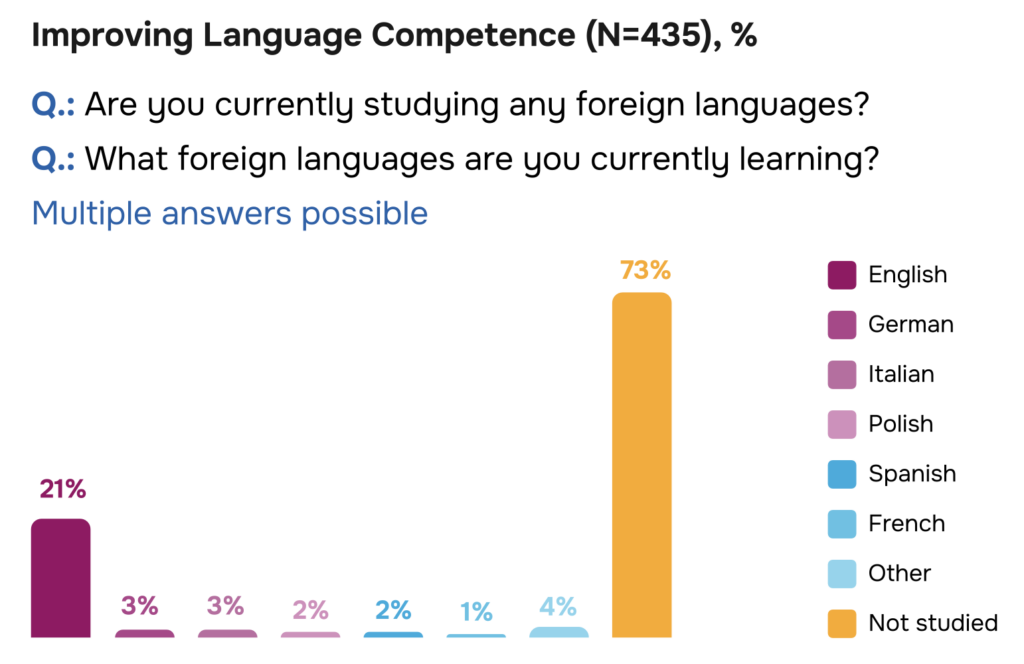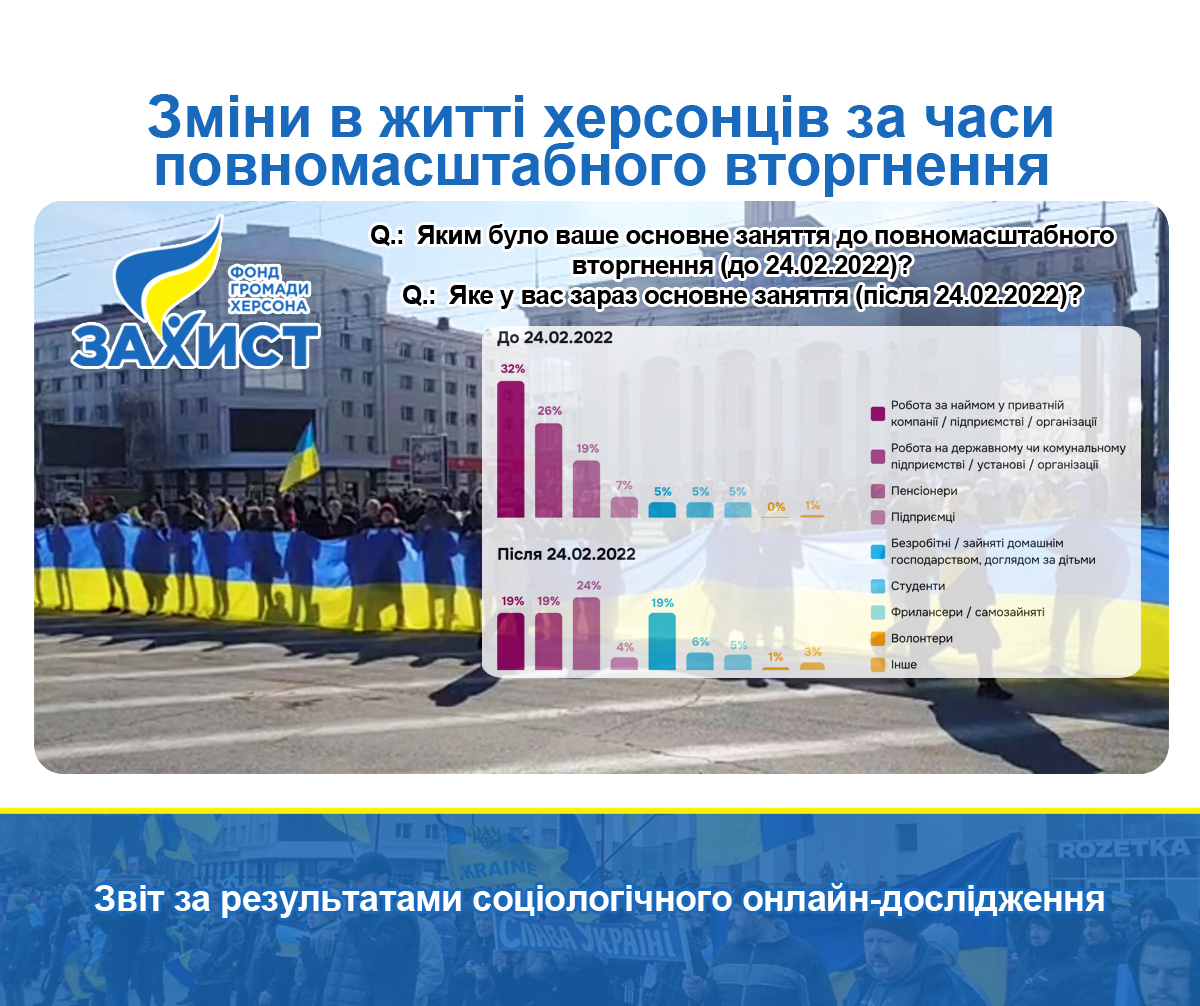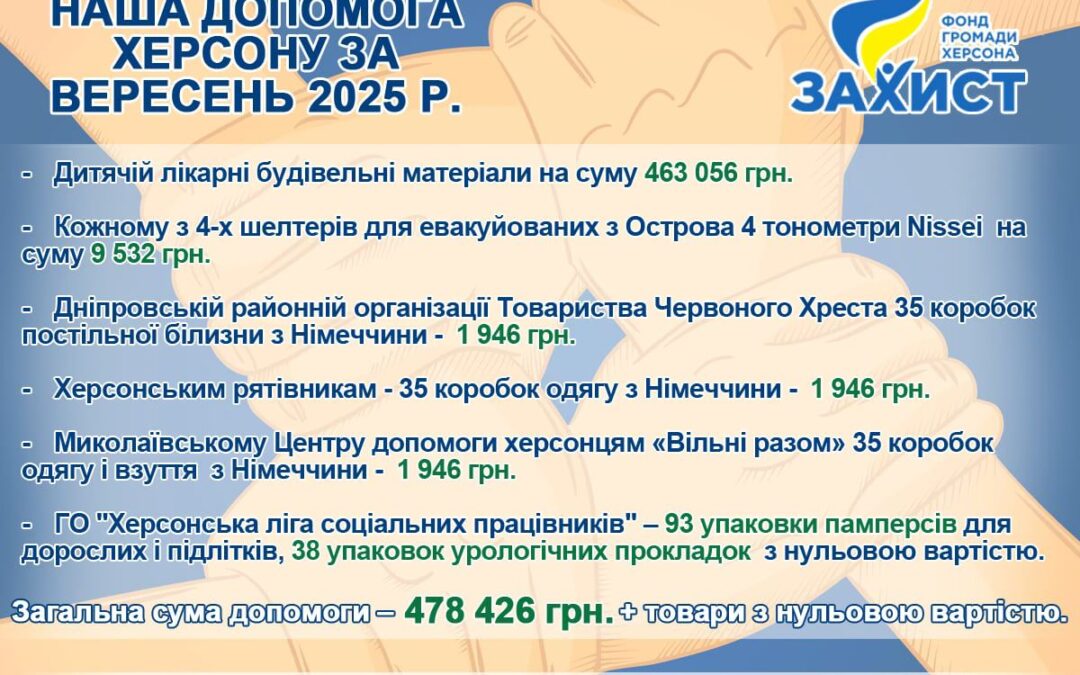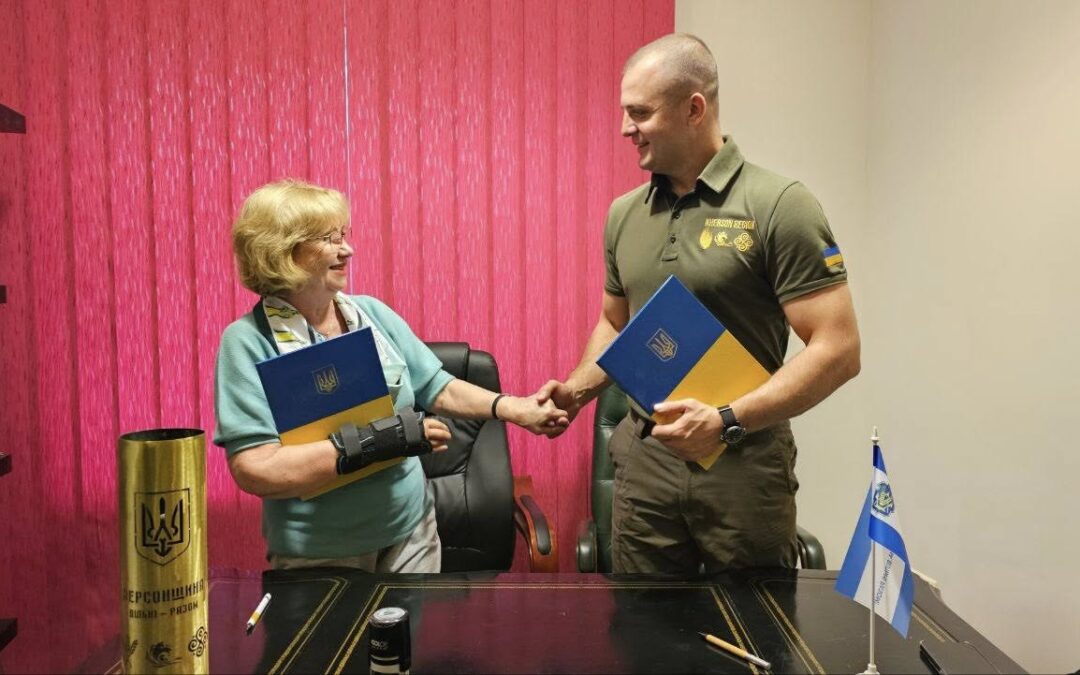Report on the results of an online survey based on an interactive structured questionnaire, the link to which was sent to potential respondents from the database (Kherson Community Research Online Panel).
Purpose of the Study: to elucidate the changes in the everyday lives of Kherson residents since Russia’s 2022 full-scale invasion.
Key Findings
The war and subsequent evacuations have profoundly reshaped the lives of Kherson residents, with most changes occurring in the first two years of the conflict. By 2024, the situation had stabilized, reflecting the circumstances that residents had already adapted to. A comparison between the results of the 2024 survey and a similar survey conducted in December 2023 reveals that most figures fall within the margin of error. Using a medical metaphor, if the state of the community in 2023 was ‘difficult,’ it remained ‘consistently difficult’ in 2024. Nonetheless, Kherson residents have not only adapted to the conditions of war, displacement, and emigration, but also revived elements of their pre-war lives, such as holidays, career pursuits, education, and celebrating the New Year with a Christmas tree.
By early 2025, nearly half of the respondents (49%) had changed jobs, while 66% had switched professions. Compared to early 2022, the unemployment rate rose from 5% to 19%, although it decreased from 28% in December 2023. For many, these professional shifts resulted in downward social mobility, with 56% of employed residents experiencing a career setback. However, 10% managed to improve their social status and discovered new life prospects, more prominently among those who left the city.
Compared to early 2022, the incomes of most Kherson respondents have declined: slightly for 20% of respondents and significantly for 48%. These figures have also increased compared to the 2023 survey, where the drops were 19% and 35%, respectively.
In 2024, 17% of working Kherson residents were able to take a holiday break.
Language proficiency trends remained unchanged, with 21% of residents studying English, 3% for both Polish and German, 2% for Spanish, and 1% for French, predominantly through self-study.

Regarding demographics, 13% of Kherson residents have changed their marital status since early 2022, a rise from 8% in 2023. Only 7% of families have had children during the war, with a higher incidence among families no longer residing in Kherson.
The issue of living conditions is acute for Kherson residents, with over half (53%) living in rented housing. This figure increased from 44% in December 2023 and represents a significant rise from the pre-invasion period, when only 9% of residents rented homes. As anticipated, the proportion of renters is higher among those who left the city (85%).
Before the full-scale invasion, 79% of Kherson residents set up a Christmas tree for the New Year. In 2024, this number dwindled to 39%, remaining nearly the same as in 2023.

You can read the full report by downloading it:
The research was conducted by the Kherson Community Foundation “Zakhyst” with the support of the National Network for the Development of Local Philanthropy and GlobalGiving
The research was prepared by the Kherson Community Foundation “Zakhyst” as a part of its project implemented under the USAID/ENGAGE activity, which is funded by the United States Agency for International Development (USAID) and implemented by Pact. The consents of this research are the sole responsibility of Pact and its implementing partners and do not necessary reflect the views of USAID or the United States Government
Reproducing and using any part of this product in any format, including graphic and electronic, copying or any other usage is suitable to reference to the source.




